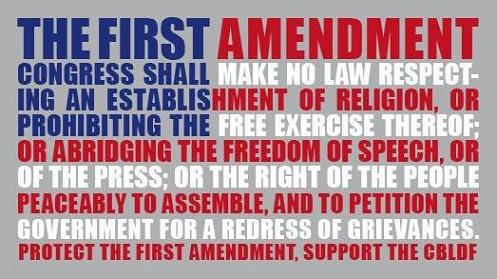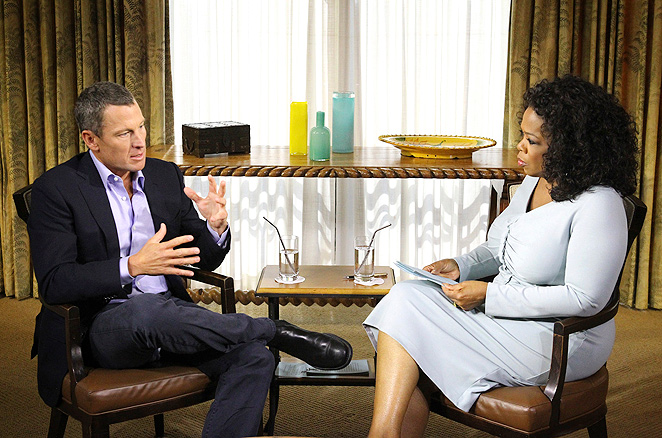OK, the Rakofsky v. Internet decision is in, and the motions to dismiss were all granted. The motion for sanctions was denied. (Your familiarity with the facts will be assumed.) You can read a variety of opinions on the subject here: Simple Justice, Techdirt, Popehat, Lawyernomics, Philly Law Blog, My Shingle.
But I’m not writing to rehash the opinion (Here, if you want to read it). I’m writing instead because of the bizarre scenario that occurred where I wore three different hats. And to give my thoughts on standing my ground in this fight.
First I was a blogger that mentioned Rakofsky in a post about attorney advertising.
Then I was a defamation defendant telling him to go shit in a hat after he sued me for stating my opinion, along with a gazillion others.
And then I was local counsel for 35 defendants (16 authors). Almost all of them were highly opinionated attorneys, had law blogs, and knew perfectly well how to stand on their own two feet in the well of the courtroom. (Client list) There wasn’t a flinching fawn anywhere in this group.
I took the gig as local counsel because I assumed it would be easy. The case clearly had no merit, would need a simple motion to dismiss, and **poof** it would be gone. I figured six months, tops, and First Amendment guru Marc Randazza was going to do all the heavy lifting as our pro hac vice counsel while I worried about local procedure on my home court.
Now lawyers working either on contingency or for a flat fee make those kinds of calls all the time, balancing the time they think they will invest in a matter against the value gained. But this took two years, confounding all expectations, and required a lot of extra time with some pretty sharp minds looking on. While I’ve had high profile cases before — including one that hit 60 Minutes some years back — I didn’t have blogging lawyers as clients and a profusion of popcorn eating armchair pundits looking on and reading the filings.
Most readers only know me through this blog, not by watching the actual practice of law. I have a separate website for my law practice (which I still hate), and I do that on purpose. The contents over here are opinion and news, and the contents over there are a digital brochure for lawyering. I rarely link to the website, or even mention it, and it’s seldom visited relative to this blog’s traffic. People here don’t watch me practice law.
But everything was now different as I became a crazy cocktail of blogger, defendant and lawyer — shaken (not stirred) together. And folks were watching.
Given that blogger/defendant/lawyer brew , it puts me in a good position to shed some light on why this took two years, as some have criticized New York’s judiciary system for the delay. This is the short version of the procedural morass — including plaintiffs’ counsel quitting and our first judge retiring:
- We had jurisdictional failures with almost all the defendants on the original 72 page complaint;
- We had an 82-page amended complaint almost immediately with new parties, with yet more jurisdictional failures;
- We had opposition to a simple pro hac vice application;
- We had the plaintiffs trying to take papers from a motion to be relieved as counsel, altering them and trying to submit them in another motion;
- We had plaintiffs’ counsel quit soon after the suit was started — and while the individual plaintiff could proceed on his own, his corporation was required by state law to have counsel;
- Plaintiffs sought and obtained a stay so they could find that new counsel;
- We had multiple attempts by plaintiffs to modify the stay they had requested, so that only they could file papers, including attempts to add new parties and amend the complaint a second time, with a 268 page, 1,223-paragraph opus ;
- We had our judge extend the stay, and then retire;
- We had the matter re-assigned to a new judge that was swamped with new cases that he had to dig out from under;
- We had an extraordinary number of defendants all making motions.
I know that this seems like a lot, but it really is the short version. It should have been simple, but it wasn’t. That sucks for those involved, but really, what were the odds that the plaintiffs’ lawyer would quit and then the judge would retire? Those were both biggies.
Is it possible the case could go on further with an appeal? I suppose it is, but as pointed out elsewhere, the judge was quite charitable toward Rakofsky by not sanctioning him, perhaps believing he’d been punished enough with the scathing online commentary, albeit much of it brought on by his own conduct.
But appellate judges might not be as dismissive as the trial court was of his having held himself out as a New York lawyer and putting a New York law office on his letterhead when he’s not admitted here. Leaving aside the cost of an appeal, there is much to lose by having appellate judges look at the conduct that many were already criticizing.
I gave up long ago trying to make predictions about this case, so I won’t make any here about whether it’s truly over. In fact, I try not to make predictions on any of my cases since the vagaries of life and litigation tend to upset the prediction applecart.
But assuming it is over, since that is what logic tells me, we move to the ultimate question: Was it worth being part of the defense team?
 The answer has to be yes. The clients I have are like-minded individuals that cherish the First Amendment and are willing to fight for it. They could have easily ponied up the $5,000 that Rakofsky wanted early on to make the case go away, but they elected to fight. These are the types of people you want in your foxhole.
The answer has to be yes. The clients I have are like-minded individuals that cherish the First Amendment and are willing to fight for it. They could have easily ponied up the $5,000 that Rakofsky wanted early on to make the case go away, but they elected to fight. These are the types of people you want in your foxhole.
The message should go out loud and clear to all that consider bringing a frivolous suit against us. We make our living within the justice system, many of us by battling in the courtroom well. We have a pretty good grasp of how the courts work and the bounds of our freedom to speak and to write that are immortalized in the Bill of Rights.
We think it’s important to shine a light on ethical issues that we see with respect to attorney conduct that we believe crosses red lines, in the grand hope that such light becomes a disinfectant for the legal community. We do not want to see the cops’ Blue Code of Silence or the medical community’s White Coat of Silence darken our profession.
We will not cower or wilt under fear of empty threats or vacuous suits. Those that attempt such intimidation will find hardened and opinionated citizens who don’t care to relinquish our rights to speak freely. We know how to stand on the ramparts to fight for those rights, and we know how to win. Representing such resolute individuals, despite the procedural shambles that ensued, has been my honor.
Was it worth doing? You’re damn right it was.



